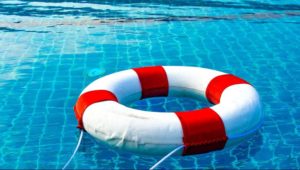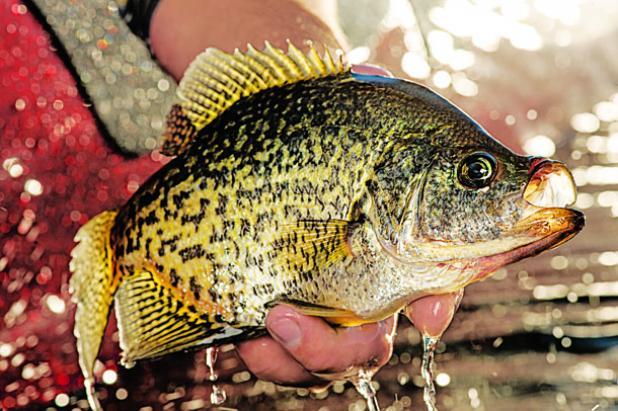Posts Tagged ‘Boating Safety’
Water and Boating Safety. By Our Student Pharmacist, Andris Grinvalds.
Summer is almost here! The consistent warm temperatures and sunshine are drawing everyone to the outdoors.
There is no better way to enjoy the hot weather than to go for a swim or go boating out on a lake. However, it is important for everyone to first consider boating and water safety. Most accidental drownings are preventable and it is important for everyone to be aware of these safety tips so we can all beat the heat with safety in mind.
The number one rule is to never swim alone and to never leave young children alone around any body of water. Most drownings happen silently and quickly. Being distracted for a few seconds can be enough for a child to fall into the water. Accidents can happen in less than thirty seconds. And they can happen without a sound. It is important to always have a young child within arm’s reach when around water. Remember that floating toys and air mattresses are not alternatives for life vests. Remove floating toys when the pool is not being used. Children may reach for the toy and fall in by accident. Do not be lulled into thinking children are safe if they have taken swimming lessons; it is still important to stay near the child at all times.
Other safety precautions include:
- Every able person should be trained in CPR and other rescue techniques.
- Have a first aid kit handy.
- Avoid drinking alcohol when swimming or supervising a child near water.
- Do not become complacent and rely on a lifeguard to watch children.
- If a child is missing, check the water first.
Swimming in natural bodies of water comes with different risks. Water in rivers and lakes is darker and may have a current or undertow. If you are caught in a current, do not fight it. Float with the current or swim parallel to shore until the current is weak enough to escape. Never dive in unfamiliar areas.
Other popular summer activities include sailing and boating. Most of boating fatalities can also be avoided if one is aware and knows how to stay safe. Nearly half of all boating accidents happen when alcohol is involved. Avoid alcohol when operating a boat. Anyone born after January 1, 1982 must have a boating license to operate a boat. It is important that all passengers are familiar with the safety precautions before boarding.
All of the boating regulations for Ohio can be found HERE.
Life jackets are crucial in boating safety. In Ohio, children under 10-years-old must always wear a life jacket on boats less than 18 feet in length. The law also says that there must be a life jacket for every person aboard the boat and they must be readily accessible. All boaters are encouraged to wear a life jacket at all times. Falling out of a boat may disorient the person and prevent them from being able to swim. A life jacket will keep the person’s head above water so they don’t drown.
Life vests should be inspected before leaving the shore to make sure they are in good condition. It is also important for everyone to try on the life jacket and make sure it fits. There are different life jackets for children and adults. Life jackets are fitted based on weight and chest size. Make sure the life jacket has a tight fit and is properly fastened. To check if the life jacket fits properly, lift your arms up and have someone pull up on the shoulders of the vest. If the jacket does not ride up over your chin or face, it fits correctly.
Some other boating safety tips include:
- Never boat alone or at least have a plan and let someone know where you are going and when you will be back.
- Always carry a cell phone for emergencies.
- Never swim in a marina. Boats are connected to shore with power lines and stray power lines can result in paralysis and death.
Please share these tips with family and friends to bring awareness to the community. If we all know and understand the safety concerns of swimming and boating, we can avoid tragedy and enjoy this beautiful summer weather.
Resources:
Boyse K. Water and pool safety. Published May 2010. Accessed June 2019. http://www.med.umich.edu/yourchild/topics/water.htm
National Safety Council. Water Safety. Published 2019. Accessed June 2019. https://www.nsc.org/home-safety/tools-resources/seasonal-safety/drowning
Kalkomey Enterprises. Study Guide for Ohio Boater Education Certificate. Published 2019. Accessed June 2019. https://www.boat-ed.com/ohio/studyGuide/10103602/
United Stated Coast Guard. Wearing your life jacket. Published June 2019. Accessed June 2019. https://www.uscgboating.org/recreational-boaters/life-jacket-wear-wearing-your-life-jacket.php
United States Coast Guard. How to choose the right life jacket. Published June 2019. Accessed June 2019. http://www.uscgboating.org/images/howtochoosetherightlifejacket_brochure.pdf
National Marine Manufacturers Association. Safe boating tips. Published May 21 2019. Accessed June 2019. https://www.discoverboating.com/ownership/safety/tips
Catching the Big One: Summer Fishing and Safety Tips. By Our July Student Pharmacist and Fisherman, Rich Downs.
As you all may already know, if you have read my bio on the blog, I love to fish. Anytime I get a chance, I hit the water. More often than not, I do a lot of shore fishing, but when I get the opportunity to catch a ride out on a boat, I take it.
Summer is a great time to be out near or on the water–the weather is nice and near the water is a great place to grill out with the family. Today’s blog posting is all about fishing tips and a touch of boating safety.
My favorite type of fish to go after is the largemouth bass. These crafty predators patrol the shallow waters in the early morning and later in the evening, usually to feed. These times of day are perfect to go out if you are a shore fisherman like me. In the heat of the day, bass tend to move to deeper, cooler waters. They also like to hang out around fallen trees and any place they can find shade or cover. Drop offs from shallow to deep water are excellent places to look for them.
Bass usually attack in two ways: they lie in wait or they cruise the open water. My favorite lure is the Bass Stopper. It is a 6” long purple worm with a pink tip on the end rigged with 3 hooks. It can be used to fish deeper waters with a small amount of weight attached about a foot or so up the line or in the shallows. The worm usually has a twirling motion through the water and it flicks the pink tail to attract the eye.
Additional proven baits are spinners, buzz bait, weedless frogs and crayfish, and my other personal favorite, the Rapala. Other baits can work, but these are some of the best.
Bluegill and Crappie are a bit different. Bluegills tend to hang out near structures and are much more aggressive throughout the day. Some of the bigger ones can be found deeper, but the little ones are everywhere in small farm ponds (if they are stocked, of course). They are fun to catch, even if they are small.
I normally use a very small hook with a wax worm or piece of night crawler with a bobber attached. Change depths from the bobber to the hook if the fish aren’t biting. This strategy can help when the water is changing temperatures.
Crappie tend to move to deeper water under structures and around fallen trees. Schools of them can be found using a depth finder if one is lucky enough to be on a boat. Jigs with a minnow attached are good ways to catch crappie. You can also use spinners or anything that swims. These make excellent meals when you catch a bunch and fry them up (make sure to clean and cook them properly).
Once the day turns into night, it’s time to get out the weights and the chicken liver, because its channel cat time. Catfishing time can be a very relaxing part of the night where you get out the chair and favorite beverage (adult or other, it’s your choice). The catfish move into shallower water to feed late evening and into the night. They are scavengers and like things that smell and are located at the bottom of the water.
The best ways to fish for catfish are large hooks, usually baited with chicken liver, shrimp, minnows or cut up bait fish, either using the tight line method or using a slip bobber that slowly drops the bait to the preset depths or the lake floor.
Boating safety is another concern altogether, but I will touch on it here.
Make sure to wear a life jacket and avoid alcohol while driving the boat.
Make sure that there are safety protocols in place and that the driver of the boat has taken the proper courses to operate the boat.
Always use common sense in maintaining proper speed in certain areas and obey all posted limits.
Fishing is a wonderful experience and I am very excited to share some of my passion with you today. I hope these tips help as you venture out into the fishing world this summer. Now get out there, bait some hooks, and enjoy the life of a fisherman, my friends.
References
http://www.outdoorlife.com/blogs/gone-fishin/2014/05/summer-bass-fishing-tips-tactics-and-gear-you-need-your-biggest-bass-ever
http://www.scout.com/outdoors/wired2fish/story/1469017-5-tips-to-catch-more-shallow-summer-bass
http://fw.ky.gov/fish/documents/summerfishingtips.pdf
http://www.fieldandstream.com/articles/fishing/2013/05/welcome-your-perfect-summer






